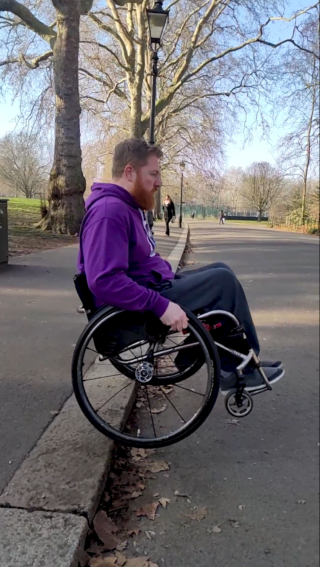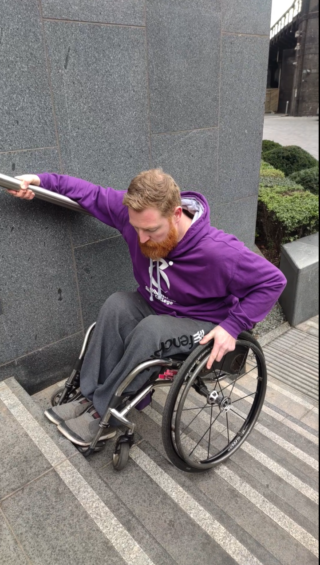The growth of social media, and its increasing accessibility, means it has become a staple part of people’s daily lives. This gives health and care improvement professionals an opportunity to improve health outcomes remotely, in ways that haven’t been possible before.
The latest BMA data shows there are now more than 7.2 million people waiting for treatment in England alone, and nearly 3 million of them are waiting over 18 weeks. However, there is no longer the need for people to wait without any support.
Delivering support to people waiting for care can improve health outcomes and increase the success of treatment.

Health and care professionals, alongside their improvement colleagues, are seeing how delivering support while people wait can improve health outcomes and increase the success of treatment.
Many patients waiting for care will already be searching online for support, so it’s far better that it comes from a trusted and reliable source.
Whenever I’m looking for information, the first thing I do will be to search online for what I need. I’m usually looking for video tutorials, both because I’m a visual learner and also for the human element – talking from experience.
There are some great video tutorials out there that cover a massive range of topics from sport and travel to food and tech. There are also a growing number of videos to support people with their health.
Whenever I’m looking for information, the first thing I do will be to search online for what I need. I’m usually looking for video tutorials.
When I set up my social enterprise, The Wheelchair Skills College, I knew that the vision I had set was a mammoth, if not impossible, task. I want to ensure that every wheelchair user has access to the skills they need in using their wheelchair to build confidence and independence.
With over a million wheelchair users across the UK, there’s no simple answer to how you reach a diverse population of that size.
So how do you reach people quickly and easily?
We’re always talking about using technology to make health care more accessible and while it’s not always going to be a replacement for in-person services, there are lots of opportunities for it to subsidise what we offer face-to-face.
Since setting up The Wheelchair Skills College, I’ve had enquiries from people across the UK asking how they can learn to use their wheelchair and live a more independent life. In the long term, I’m planning to get in-person training across nationwide locations. That will require significant time and resource and the need is there now.
As a visual learner, I know from personal experience how much easier it is to learn when looking at how something is done.
As a more immediate and accessible response, I’ve created a series of videos that people can watch to get a better understanding of wheelchair skills and learn how it might build their independence.
Wheelchair skills, like other technical skills, are very visual – seeing them demonstrated is by far the best way to understand them. As a visual learner, I know from personal experience how much easier it is to learn when looking at how something is done.
While not intended as a replacement for face-to-face training, the videos offer a way to share knowledge and support more people, much faster.
A recent comment from a viewer shows how much these are valued:
“Thank you so much for these videos! I sat and watched all of the basic level vids yesterday and today and I’ve been out shopping by myself. I tackled slopes and doors successfully.”

Top tips
Here are a few things that were key in making my videos:
- Lived experience. There are some fantastic health outcomes that will come from the videos, but none of them come from clinical solutions. They come from my life experience of using a wheelchair from the last 17 years.
- Skills for everyone. People can take the skills that will make a difference to their daily lives. Levels set at beginner, intermediate, advanced and expert.
- Bitesize videos that can be watched have two minutes to spare.
- Concise and clear format. Every video follows the same format: The skill > why it’s useful > keeping safe > demonstration.
- No ads! No one has time for that and it’s not about making money. The knowledge is there and people should take it with ease.
- Designed for phones. People can watch them at home and watch them when they’re outside practising the skills. Then watch them again!
Getting the information to those who need it
These videos are just a start. There are hundreds more that can be made. The next step, however, is promoting them with people who need to see them. To ensure that they are successfully promoted, they need to be woven into the ecosystems that currently support wheelchair users.
The difficulty of course is how do we share that without the relevant resources, both time and money, in place? If you have ideas for how to distribute these videos to an audience of wheelchair users you’re working with, please get in touch.
Watch my introductory video to see how I’m making wheelchair skills accessible to patients at every level of use.
If you know anyone who uses a wheelchair or supports wheelchair users in any context, then please do share these videos with them:
Wheelchair skills videos on YouTube or
Wheelchair skills videos on TikTok
How to use social media for positive outcomes
The Third Sector SIG brings together stakeholders that work across the health and social care sector from a Third Sector background.
In our next SIG meeting we will look at how to use social media platforms, focussing on videos, to reach out to patients with valuable information that can improve their health outcomes.
Find out more about using social media to share lived experience in the next Third Sector SIG.